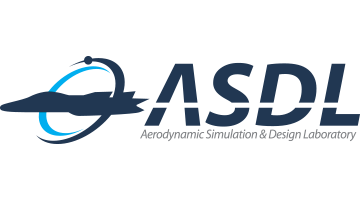The governing equation of fluid dynamics, such as Euler or Naiver-Stokes equation is almost impossible to solve analytically, due to the non-linearity of these equations, thus the computational approach is important. During the past few decades, the computational fluid dynamics (CFD) is widely explored, and recent dramatic development makes it feasible to analyze complex flow physics around realistic aircraft numerically. The radical issue of CFD is the high-fidelity numerical modeling of hyperbolic conservation laws, including these governing equation. Up to now, our laboratory has developed various robust, accurate and efficient numerical methods, such as advanced flux scheme (RoeM, AUSMPW+, M-AUSMPW+) and high-resolution scheme reflecting multi-dimensional effect (MLP).
Roe’s numerical flux induces shock instability and entropy violating expansion shock near excessive expansion region. AUSM/AUSM+ numerical flux also have numerical instability near strong shock and the wall. To eliminate this problem, taking into account multi-dimensional physics, our laboratory developed RoeM and AUSMPW+ flux by applying multi-dimensional numerical dissipation. Comparing to other numerical fluxes, the developed schemes have much better accuracy and robustness.

Fig. 1. Density contour of supersonic corner
Figure 1 shows a density contour of the expansion wave and the shock near the supersonic corner. The RoeM scheme successfully captures the shock compared to the original Roe scheme.

Fig. 2. Pressure contour of the supersonic flow near blunt wedge
Figure 2 shows pressure contour of bow shock near supersonic blunt body nose. It is demonstrated that AUSMPW+ flux accurately captures a shock and stabilize numerical oscillation near the wall.
Taking into account multi-dimensional flow physics, an MLP scheme surpasses the limit of conventional shock capturing methods which were restricted to only 1D physics. Applying the MLP scheme on FVM based structured and unstructured grid systems makes the flow solver more robust, accurate and easy to converge.


Fig. 3. 3D viscous shock tube problem
The above figure shows the result of three-dimensional viscous shock tube via M-AUSMPW+ and MLP5. The proposed method successfully captures a complex vortex structure induced by the interaction of moving and reflecting shock and boundary layer.










